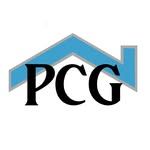The Cool Advantage: Exploring the Benefits of Roof Ventilation
PE
Roof ventilation is often an overlooked aspect of building design, but it plays a crucial role in maintaining a comfortable and healthy indoor environment. Proper ventilation allows for the exchange of stale air with fresh air, reducing moisture buildup and preventing the accumulation of harmful pollutants. In this blog post, we will explore the various benefits of roof ventilation and why it is a cool advantage for any building.
When we talk about roof ventilation, we often mention something called Net Free Area (NFA). Think of it as the open area that allows air to flow through your roof. Imagine your roof as a giant lung—it needs to breathe! NFA is like the lung capacity for your attic. 🌬️
Balancing Act: Proper ventilation means finding the right balance between air intake (usually at your eaves or soffits) and air exhaust (near your roof ridge). It’s like inhaling and exhaling for your house!
Minimum NFA: As a rule of thumb, your ventilated space should have a minimum NFA of 1 square foot for every 150 square feet of attic floor space. So, if your attic is 300 square feet, you’d need at least 2 square feet of NFA.
Reducing the Ratio: If you have a vapor barrier in your attic or a height difference of at least three feet between intake and exhaust, you can reduce the ratio to 1 square foot for every 300 square feet.
Improved Indoor Air Quality
One of the primary benefits of roof ventilation is the improvement of indoor air quality. Without proper ventilation, pollutants such as carbon dioxide, volatile organic compounds (VOCs), and airborne contaminants can accumulate indoors, leading to a range of health issues. Roof vents facilitate the removal of these pollutants, ensuring a healthier living or working environment.

Reduced Heat Buildup
In hot climates, the sun's radiant heat can cause the temperature inside a building to rise significantly. Roof ventilation helps to reduce heat buildup by allowing hot air to escape. This process, known as passive cooling, can significantly reduce the need for air conditioning, resulting in energy savings and lower utility bills.

Prevention of Moisture Damage
Moisture buildup in attics or roof spaces can lead to mold growth, rotting wood, and structural damage. Roof ventilation helps to prevent these issues by allowing moisture-laden air to escape, reducing the risk of condensation. By maintaining a dry environment, roof vents contribute to the longevity and durability of the roof structure.
Extended Roof Lifespan
A well-ventilated roof can last significantly longer than one without proper ventilation. By reducing heat and moisture buildup, roof vents help to prevent the deterioration of roofing materials, such as shingles or tiles. This prolongs the lifespan of the roof, saving homeowners or building owners the cost and hassle of premature roof replacement.
Energy Efficiency
Roof ventilation plays a crucial role in improving a building's energy efficiency. By reducing heat buildup, it helps to lower the demand for air conditioning during hot weather, resulting in lower energy consumption. Additionally, proper ventilation can also enhance the effectiveness of insulation, ensuring that conditioned air remains inside the building for longer periods.
Prevention of Ice Dams
In colder climates, ice dams can form on roofs during winter, causing water to back up and potentially leak into the building. Roof ventilation helps to prevent ice dams by maintaining a consistent temperature on the roof surface, preventing snow from melting and refreezing. This protects the roof and prevents costly water damage.
Comfort and Well-being
Proper roof ventilation contributes to the overall comfort and well-being of the occupants. By removing excess heat and moisture, it helps to create a more pleasant indoor environment. This is particularly important in areas with high humidity or extreme temperatures, where proper ventilation can make a significant difference in the comfort levels of a building.
Environmental Sustainability
By reducing the need for air conditioning and extending the lifespan of the roof, roof ventilation promotes environmental sustainability. It helps to lower energy consumption, reduce greenhouse gas emissions, and minimize the waste generated from premature roof replacements. Incorporating roof ventilation into building design is a step towards creating more eco-friendly and sustainable structures.

In conclusion, roof ventilation offers a range of benefits that contribute to a healthier, more comfortable, and environmentally friendly living or working environment. From improved indoor air quality to energy efficiency and extended roof lifespan, the advantages of roof ventilation are undeniable. Whether you are constructing a new building or considering an upgrade, investing in proper roof ventilation is a cool advantage that pays off in the long run.
